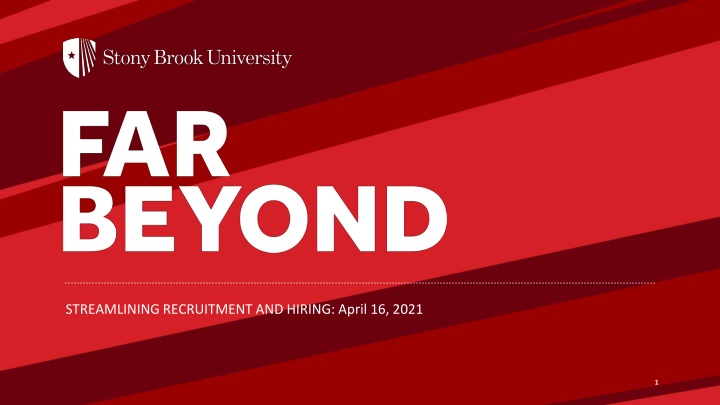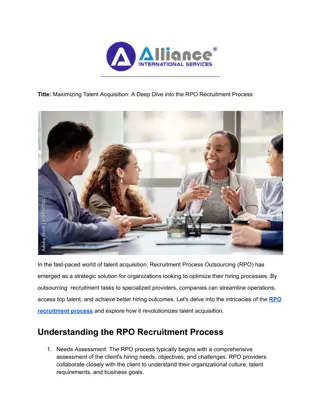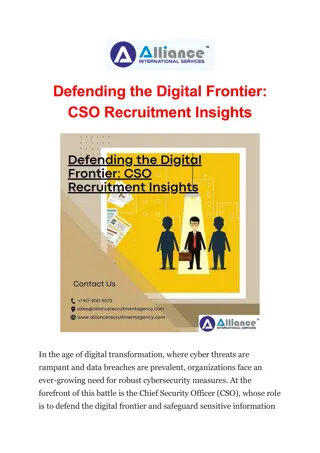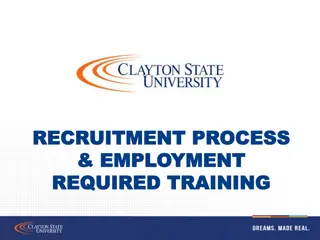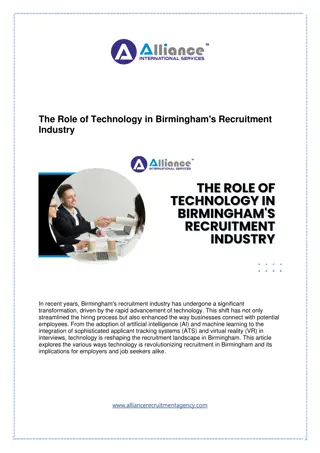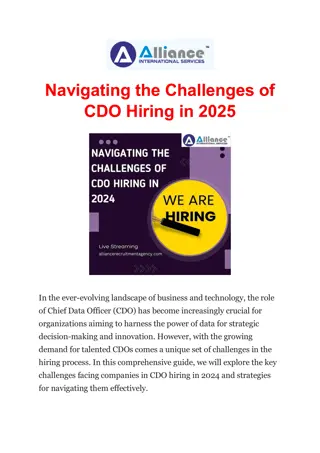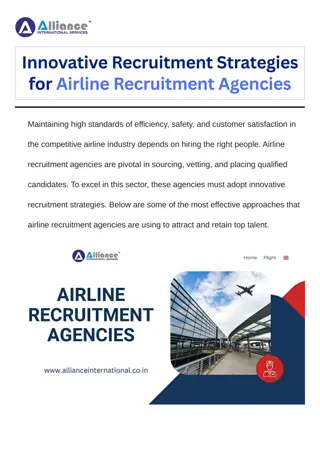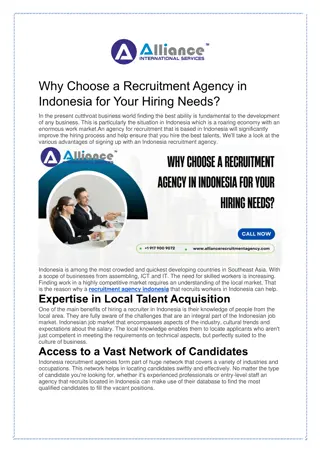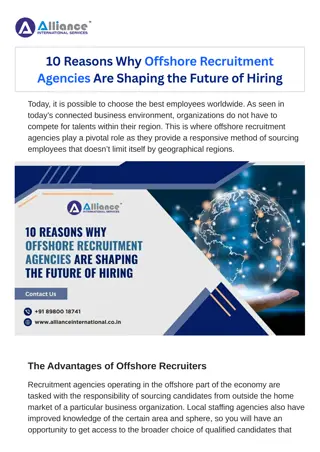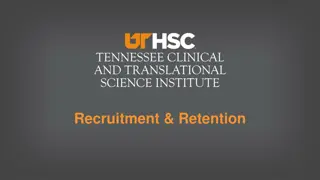Enhancing Efficiency in Recruitment and Hiring Process at SBU
This initiative at SBU aims to enhance the efficiency of recruitment and onboarding processes for postdocs and staff by streamlining existing practices. The current recruitment system is slow, inefficient, and lacks homogeneity across units. Recommendations include reviewing best practices within HR to determine the optimal recruitment model and defining clear roles for all stakeholders involved.
Download Presentation

Please find below an Image/Link to download the presentation.
The content on the website is provided AS IS for your information and personal use only. It may not be sold, licensed, or shared on other websites without obtaining consent from the author.If you encounter any issues during the download, it is possible that the publisher has removed the file from their server.
You are allowed to download the files provided on this website for personal or commercial use, subject to the condition that they are used lawfully. All files are the property of their respective owners.
The content on the website is provided AS IS for your information and personal use only. It may not be sold, licensed, or shared on other websites without obtaining consent from the author.
E N D
Presentation Transcript
Description Co-Chairs: Rachael Redhead, Senior Human Resources Business Partner, Division of Information Technology Alfredo Fontanini, Chair Department of Neurobiology and Behavior Initiative Type: This initiative aims at enhancing the efficiency of SBU processes. The goal is to streamline recruitment and onboarding processes for postdocs and staff (research, administrative, and clinical). Review of recruitment systems and policies for faculty, instructors, temporary employees, and contractors was beyond the scope of this initiative. Problem Statement: Existing recruitment practices are slow, inefficient, and cumbersome. Practices differ across East and West campus, and there is an overall lack of homogeneity across units. SBU needs an efficient and flexible system with well formulated policies and practices. Opportunity: Develop a recruiting and hiring process capable of balancing efficiency with flexibility. 2
Current State The University model for recruitment is predominantly decentralized. The University Hospital model is predominantly centralized The current system of record is TMS Taleo, it was introduced in 2010 and can work with both decentralized and centralized The system for recruiting faculty is Interfolio (not reviewed here) Search and selection processes rely on multiple steps across many offices (Department, Division Budget, HRS, OEA, Grants Management, Visa & Immigration Services VIS), requiring optimal integration Because PI-based activities are not recognized by HRS, Principal Investigators must repeat post-doc searches twice (finding candidate and direct them through a formal search) 3
What We Learned The existing recruitment process is slow, inefficient, and cumbersome TMS was originally put in place assuming high levels of HR staffing. Departments and HRS have less staffing than at inception A hybrid (centralized/decentralized) system is ideal when efficiency and flexibility are needed, but requires proper staffing and IT support Communication between units is incomplete and inefficient Need for more training for hiring units IT systems are not integrated Postdoc hiring is rigid and does not fit current Principal Investigators (PIs) practices 4
Recommendations Review best practices within HR to weigh the pros and cons of a centralized vs decentralized recruitment model and review recruiter to requisition ratio Define Roles of Vice President Coordinators & HR Business Partners Develop an additional recruitment track that defines acceptable PI-led search and selection practices and recognize them as compliant without the need of an additional search Develop procedures to facilitate the transition of recently graduated PhD students into postdocs longer than 1 year. Develop procedures to extend UG student status beyond their graduation (to cover at least the summer) 5
Costs/Benefits Analysis Benefits: Significant reduction of time to recruit and hire postdoc, faculty, staff, and students Reductions of administrative burden at department level Decentralized recruitment creates opportunity for individuals involved in recruitment process to focus more on the hire than on completing the process Align the search and selection process to modern user-centered practices It is possible to extend the postdoc period of recently graduated PhD to one year It is easier to hire a SBU Undergraduate student than a recently graduated (RG) SBU UG Create policies that could be adapted to create pipeline programs. Lighten the bureaucratic burden of recruiting RG Costs: Centralized HR process may face resistance from some departments who may not want HR to review their applicant pools, telling them who to interview, etc. Possible internal resistance in areas where the VPCs/HR Business Partners have become used to pushing things to HR 2-3 FTEs needed for the duration of the project to define roles of VP, etc. Compliance with SUNY requirements 6
Implementation Considerations Post-doc initiative will require feedback from HRS, OEA, SUNY, legal, departments and faculty to ensure compliance and PI-friendliness Staffing (1FTE) with a postdoc liaison to facilitate training and approval of PI-led search and selection Changing recruitment processes will require training across many units Eagerness for changes to recruitment processes across campus 7
